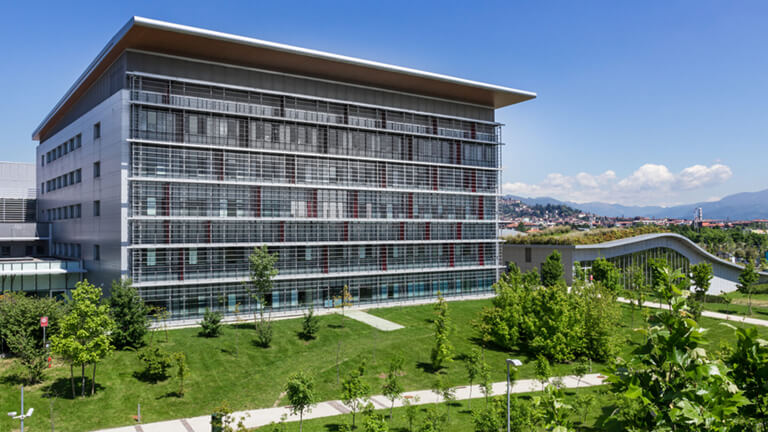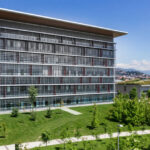Italy’s healthcare system is a cornerstone of its society, renowned for its universal coverage, high-quality care, and commitment to patient well-being. With a network of approximately 1,065 hospitals, hospitals in Italy range from world-class university medical centers to local public facilities, serving both residents and international visitors. Whether you’re seeking emergency care in Rome, specialized treatment in Milan, or English-speaking hospitals in Italy, this guide offers a detailed roadmap to navigating Italy’s healthcare landscape. From understanding the Servizio Sanitario Nazionale (SSN) to exploring the Top 10 hospitals in Italy, this article covers hospital types, services, and practical tips to ensure informed healthcare decisions, whether you’re a local, expatriate, or medical tourist.
Find the best Hospital In Germany.
Understanding Italy’s Healthcare System: How Hospitals Fit In
Italy’s healthcare system, the Servizio Sanitario Nazionale (SSN), is a publicly funded, universal system providing free or low-cost care to all residents. Financed through taxation, the SSN is managed regionally by Aziende Sanitarie Locali (ASLs), which oversee hospitals, clinics, and primary care. This decentralized structure ensures local access but can lead to variations in service quality between regions, with Northern and Central Italy often having better-equipped facilities than the South.
Residents register with their local ASL to access public hospitals, where most services are free or require a modest co-payment (ticket) for non-emergency specialist visits or diagnostics (e.g., €25-€50). Private hospitals and clinics, either accredited (convenzionate) or fully private, offer faster access and enhanced comfort but may involve higher costs. For example, a Milan resident might visit Ospedale Niguarda for free cardiac care, while a private patient at San Raffaele pays for quicker consultations.
Foreigners with a valid stay permit can join the SSN, while tourists typically access free emergency care (Pronto Soccorso) but pay for non-emergency services. Travel insurance is strongly recommended for visitors. With 1,065 hospitals (2023 data from the Italian Ministry of Health), including 561 public and 504 private or accredited facilities, Italy’s hospital system is robust, making it a top destination for medical tourism, particularly for oncology and cardiology.
Hospital in Italy: Types and Functions
Italy’s hospitals are diverse, catering to varied needs through distinct models:
-
Public Hospitals (Ospedali Pubblici)
-
Role: Core to the SSN, providing free or low-cost general and specialized care, including emergency services.
-
Characteristics: High patient volumes, comprehensive services, but longer wait times for non-urgent procedures. Often linked to medical schools for training.
-
Examples: Policlinico Umberto I (Rome), Ospedale Antonio Cardarelli (Naples).
-
-
University Hospitals (Policlinici Universitari)
-
Role: Combine patient care, research, and medical education, excelling in complex and rare conditions. Often ranked in Top 10 hospitals in Italy.
-
Characteristics: Advanced technology, top specialists, and international reputation.
-
Examples: Policlinico Universitario A. Gemelli (Rome), Policlinico Sant’Orsola-Malpighi (Bologna).
-
-
Accredited Private Hospitals (Case di Cura Convenzionate)
-
Role: Partner with the SSN to provide covered services, blending public accessibility with private efficiency.
-
Characteristics: Shorter wait times, modern facilities, and partial SSN coverage.
-
Examples: Casa di Cura Villa Maria (Padua), Ospedale San Raffaele (Milan).
-
-
Fully Private Hospitals/Clinics (Case di Cura Private)
-
Role: Cater to patients seeking premium care, often with private insurance or out-of-pocket payment. Key in List of private hospitals in Italy.
-
Characteristics: High comfort, specialized care, and English-speaking staff.
-
Examples: Rome American Hospital, Salvator Mundi International Hospital (Rome).
-
The Best Hospitals in Italy: Leading Institutions and Specialties
Determining the best hospital in Italy involves criteria like patient outcomes, research output, technological advancements, and international rankings (e.g., Newsweek’s World’s Best Hospitals 2024). Policlinico Universitario A. Gemelli in Rome is frequently cited as a top contender for What is the name of the best hospital in Italy. Below is a Top 10 hospitals in Italy, blending public, university, and private facilities:
-
Policlinico Universitario A. Gemelli, Rome
-
Type: University
-
Location: Rome
-
Specialties: Oncology, cardiology, neurosurgery, pediatrics, transplant medicine.
-
Features: 1,550 beds, a leading research hospital affiliated with Università Cattolica del Sacro Cuore. Offers an International Patient Office with English-speaking staff.
-
Why Best: Ranked #1 in Italy (Newsweek 2024), known for comprehensive care and innovation. Addresses Best hospital in Rome Italy.
-
Example: A Rome resident received advanced cancer treatment at Gemelli’s oncology center.
-
-
Ospedale San Raffaele, Milan
-
Type: University, Private (Gruppo San Donato)
-
Location: Milan
-
Specialties: Cardiology, oncology, neurosciences, organ transplants.
-
Features: 1,350 beds, part of Italy’s largest private hospital group, with cutting-edge robotic surgery and English-speaking services.
-
Why Best: A leader in Best private hospital in Italy, known for research and international care.
-
-
Istituto Clinico Humanitas, Rozzano (Milan)
-
Type: Private, Research
-
Location: Rozzano, near Milan
-
Specialties: Oncology, cardiology, orthopedics, neurology.
-
Features: 750 beds, a teaching hospital with advanced diagnostics (e.g., PET-CT) and international patient support.
-
Why Best: Globally ranked for oncology and patient-centered care, key in List of private hospitals in Italy.
-
-
Policlinico Sant’Orsola-Malpighi, Bologna
-
Type: University
-
Location: Bologna
-
Specialties: Transplant medicine, cardiology, gastroenterology, pediatrics.
-
Features: 1,400 beds, a historic hospital with a strong research focus and English-speaking staff.
-
Why Best: A Northern Italy leader, ranked among Top 10 hospitals in Italy.
-
-
Grande Ospedale Metropolitano Niguarda, Milan
-
Type: Public
-
Location: Milan
-
Specialties: Transplants (liver, kidney), trauma, cardiology, neurology.
-
Features: 1,200 beds, one of Italy’s largest public hospitals, with advanced trauma and transplant units.
-
Why Best: Excels in emergency and complex care.
-
-
Azienda Ospedaliero Universitaria Careggi, Florence
-
Type: University
-
Location: Florence
-
Specialties: Cardiology, neurosurgery, oncology, pediatrics.
-
Features: 1,500 beds, a key Central Italy hospital with research and international services.
-
Why Best: Renowned for comprehensive care and regional significance.
-
-
Istituto Europeo di Oncologia (IEO), Milan
-
Type: Private, Specialized (Oncology)
-
Location: Milan
-
Specialties: Cancer treatment, prevention, research.
-
Features: 250 beds, focused solely on oncology, with advanced therapies like proton therapy.
-
Why Best: A global leader in cancer care, part of Best private hospital in Italy.
-
-
Bambino Gesù Pediatric Hospital, Rome
-
Type: Public, Specialized (Pediatrics)
-
Location: Rome
-
Specialties: Pediatric cardiology, oncology, neurology, transplants.
-
Features: 600 beds, known as the “Pope’s Hospital,” with international patient services.
-
Why Best: Europe’s largest pediatric hospital, key for Hospital in Italy Rome.
-
-
A.O.U. Città della Salute e della Scienza, Turin
-
Type: University
-
Location: Turin
-
Specialties: Cardiology, oncology, transplant medicine.
-
Features: 2,200 beds across four hospitals, a major Northern Italy hub.
-
Why Best: Among Top 10 hospitals in Italy for its scale and expertise.
-
-
Ospedale Antonio Cardarelli, Naples
-
Type: Public
-
Location: Naples
-
Specialties: Cardiology, neurology, emergency care.
-
Features: 1,000 beds, Southern Italy’s largest public hospital.
-
Why Best: Vital for regional healthcare access.
-
|
Hospital Name |
Type |
Location |
Bed Capacity |
Key Specialties |
|---|---|---|---|---|
|
Policlinico A. Gemelli |
University |
Rome |
1,550 |
Oncology, Cardiology |
|
Ospedale San Raffaele |
University/Private |
Milan |
1,350 |
Cardiology, Oncology |
|
Istituto Clinico Humanitas |
Private |
Rozzano |
750 |
Oncology, Orthopedics |
|
Policlinico Sant’Orsola-Malpighi |
University |
Bologna |
1,400 |
Transplants, Cardiology |
|
Ospedale Niguarda |
Public |
Milan |
1,200 |
Transplants, Trauma |
|
A.O.U. Careggi |
University |
Florence |
1,500 |
Cardiology, Neurosurgery |
|
IEO Milan |
Private |
Milan |
250 |
Oncology |
|
Bambino Gesù |
Public |
Rome |
600 |
Pediatrics |
|
A.O.U. Città della Salute |
University |
Turin |
2,200 |
Cardiology, Oncology |
|
Ospedale Cardarelli |
Public |
Naples |
1,000 |
Cardiology, Emergency |
Hospitals in Italy for Visitors and Expatriates
Foreign patients, including tourists and expatriates, often seek English-speaking hospitals in Italy due to language barriers. Emergency care (Pronto Soccorso) is free for all at public hospitals, but non-emergency services require payment for non-residents without SSN coverage. Travel insurance is essential to cover costs. Key considerations:
-
English-Speaking Support: Major hospitals, especially university and private ones, offer English-speaking staff and international patient offices. Interpreters are available if needed.
-
International Patient Services: Include visa assistance, appointment coordination, and accommodation support.
-
Recommended Hospitals:
-
Rome: Policlinico A. Gemelli, Rome American Hospital, Salvator Mundi International Hospital.
-
Milan: Ospedale San Raffaele, Istituto Clinico Humanitas.
-
Florence: A.O.U. Careggi.
-
-
Telemedicine: Platforms like Dottori.it offer English-speaking consultations for non-emergencies.
-
Guardia Medica: After-hours primary care for minor issues, though primarily Italian-speaking.
For example, an American tourist in Rome with a sudden illness can visit Policlinico Gemelli’s International Patient Office for English-language care, ensuring a smooth experience.
Hospital in Italy Rome: A Detailed Look
Rome, Italy’s capital, is a healthcare hub with top-tier hospitals addressing Hospital in Italy Rome and Best hospital in Rome Italy:
-
Policlinico Umberto I:
-
Type: Public, University
-
Specialties: Cardiology, neurosurgery, trauma.
-
Features: 1,200 beds, one of Europe’s largest public hospitals, with robust emergency services.
-
-
Policlinico Universitario A. Gemelli:
-
Type: University
-
Specialties: Oncology, cardiology, pediatrics.
-
Features: 1,550 beds, ranked #1 in Italy, with English-speaking staff.
-
-
Azienda Ospedaliera San Camillo Forlanini:
-
Type: Public
-
Specialties: Respiratory medicine, cardiology, emergency care.
-
Features: 900 beds, key for Southern Rome.
-
-
Ospedale San Giovanni Addolorata:
-
Type: Public
-
Specialties: General surgery, neurology.
-
Features: 700 beds, centrally located with emergency services.
-
-
Rome American Hospital:
-
Type: Private
-
Specialties: General medicine, orthopedics, maternity.
-
Features: English-speaking, tailored for expatriates and tourists.
-
-
Salvator Mundi International Hospital:
-
Type: Private
-
Specialties: General surgery, diagnostics.
-
Features: Known for English-speaking staff and international care.
-
-
Policlinico Universitario Campus Bio-Medico:
-
Type: Private, University
-
Specialties: Oncology, cardiology, research.
-
Features: Modern facilities, English-speaking services.
-
Emergency Care: Rome’s Pronto Soccorso at public hospitals like Umberto I or San Camillo is accessible 24/7, with triage prioritizing urgent cases.
Hospitals and Clinics Directory Italy (General Overview by Region/City)
Italy’s hospital distribution varies by region, with Northern and Central Italy hosting more advanced facilities:
-
Milan: Ospedale Niguarda (public, 1,200 beds), Policlinico di Milano (public, 900 beds), Ospedale San Raffaele, Istituto Clinico Humanitas.
-
Florence: Ospedale Santa Maria Nuova (public), Ospedale Pediatrico Meyer (pediatrics, 250 beds).
-
Naples: Ospedale Antonio Cardarelli (public, 1,000 beds), Monaldi Hospital (cardiology).
-
Bologna: Policlinico Sant’Orsola-Malpighi (university, 1,400 beds).
-
Turin: A.O.U. Città della Salute e della Scienza (university, 2,200 beds).
Smaller towns have ospedali civili for general and emergency care, ensuring regional access. Southern Italy, while improving, faces challenges like underfunding and fewer specialized centers.
Italy Hospital Jobs: Opportunities in the Healthcare Sector
Italy Hospital jobs attract medical professionals, though Italian proficiency is often required. Public sector jobs (e.g., doctors, nurses) require competitive exams, while private hospitals like San Raffaele and Humanitas offer opportunities for specialists. IRCCS hospitals (e.g., IEO Milan, UPMC Italy) focus on research, attracting international staff. For example, English-speaking doctors may find roles in private clinics catering to expatriates. Check platforms like Job in Health for openings.
Conclusion
Italy’s hospital system, anchored by the SSN, offers universal, high-quality care through a network of public, university, and private facilities. From the best hospital in Rome Italy, Policlinico A. Gemelli, to private leaders like Ospedale San Raffaele, hospitals in Italy cater to diverse needs. Whether you’re seeking English-speaking hospitals in Italy or exploring Italy Hospital jobs, this guide provides actionable insights. Visit hospital websites like gemelli.it or humanitas.it, consult your ASL, and ensure travel insurance for a seamless healthcare experience.
Meta Description: Explore top hospitals in Italy, from Rome’s Gemelli to Milan’s San Raffaele. Learn about services, doctors, and navigating Italy’s healthcare for residents and visitors.
FAQ:
-
What is the best hospital in Italy? Policlinico A. Gemelli is often ranked #1 for its comprehensive care.
-
Are there English-speaking hospitals in Italy? Yes, hospitals like Rome American Hospital and San Raffaele offer English-speaking services.
-
How do I access hospitals in Italy? Residents use SSN via ASL; tourists need travel insurance for non-emergency care.








